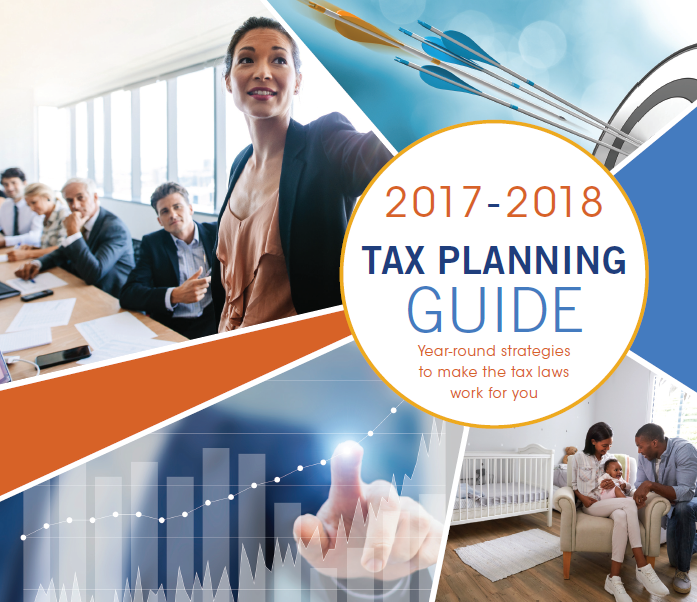No Rendering of Advice
To ensure compliance with IRS requirements, we inform you that any U.S. federal tax advice contained in this website (including any attachments or directed links) is not intended or written to be used, and cannot be used, for the purpose of (i) avoiding penalties under the Internal Revenue Code or (ii) promoting, marketing or recommending to another party any transaction or matter addressed herein.
Please be assured that this notice does not reflect any decrease in the quality of services or the amount of thought we put into our client interactions.
Any advice in this communication is limited to the conclusions specifically set forth herein and is based on the completeness and accuracy of the stated facts, assumptions and/or representations included. In rendering our advice, we may consider tax authorities that are subject to change, retroactively and/or prospectively, and any such changes could affect the validity of our advice. We will not update our advice for subsequent changes or modifications to the law and regulations, or to the judicial and administrative interpretations thereof.
For more information on Circular 230, please click here.
No Rendering of Advice
The information contained within this website is provided for informational purposes only and is not intended to substitute for obtaining accounting, tax, or financial advice from a professional accountant. Presentation of the information via the Internet is not intended to create, and receipt does not constitute, an accountant-client relationship. Internet subscribers, users and online readers are advised not to act upon this information without seeking the service of a professional accountant. Any U.S. federal tax advice contained in this website is not intended to be used for the purpose of avoiding penalties under U.S. federal tax law.
Accuracy of Information
While we use reasonable efforts to furnish accurate and up-to-date information, we do not warrant that any information contained in or made available through this website is accurate, complete, reliable, current or error-free. We assume no liability or responsibility for any errors or omissions in the content of this website or such other materials or communications. If you wish to contact the webmaster of this website, please call CPA Websites Solutions at 802-655-1519.
Disclaimer of Warranties and Limitations of Liability
This website is provided on an "as is" and "as available" basis. Use of this website is at your own risk. We and our suppliers disclaim all warranties. Neither we nor our suppliers shall be liable for any damages of any kind with the use of this website.
Links to Third Party Websites
For your convenience, this website may contain hyperlinks to websites and servers maintained by third parties. We do not control, evaluate, endorse or guarantee content found in those sites. We do not assume any responsibility or liability for the actions, products, services and content of these sites or the parties that operate them. Your use of such sites is entirely at your own risk.
We have moved! Please visit us at our new location at 134 Sipe Avenue, Hummelstown, PA 17036.


Browser our newsletters for additional information.
Publications

RS, State, & Revenue Office sites
- IRS Forms
- Internal Revenue Service
- PA Department of Revenue
- Social Security Administration
- Social Security Benefits Planner
- US Department of Labor
- PA Department of Labor and Industry
- PA DCED
Useful Forms
2025 Standard Mileage Rates
| Purpose | Rates per Mile |
| Business | 70 cents |
| Medical/Moving | 21 cents |
| Charitable | 14 cents |
2024 Standard Mileage Rates
| Purpose | Rates per Mile |
| Business | 67 cents |
| Medical/Moving | 21 cents |
| Charitable | 14 cents |
Check It Out!
Check out the article in PICPA CPA Now by Greg Kashella, published November 2021, Enhanced Financial Statement Disclosures for Small Businesses.
Check out the article in the Central Penn Business Journal, Women Who Lead, March 2019 article featuring our partner Jori Culp
Tax-Related Identity Theft
The IRS combats tax-related identity theft with aggressive strategies of prevention, detection and victim assistance. To find out more about tax-related identity theft call our office or visit https://www.irs.gov/identity-theft-fraud-scams/identity-protection for information and guidance.
Remember that the IRS will never contact you by electronic means. This includes emails, phone calls, text messages, or social media channels. If you are ever in doubt whether contact by someone claiming to be from the IRS is legitimate, call our office first for verification.

Just because it’s December doesn’t mean it’s too late to reduce your 2025 tax liability. Consider implementing one or more of these year-end tax-saving ideas by December 31.
Defer income and accelerate deductions
Pushing income into the new year will reduce this year’s taxable income. If you’re expecting a bonus at work, for example, ask if your employer can hold off on paying it until January. If you’re self-employed, you can delay sending invoices so that they won’t be paid until January and thus postpone the revenue to 2026.
If you itemize deductions, remember that deductions generally are claimed for the year of payment. So, if you make your January 2026 mortgage payment in December, you can deduct the interest portion on your 2025 tax return. Similarly, if you’ve received your 2026 property tax assessment and pay it by December 31, you can claim it on your 2025 return (provided your total state and local taxes don’t exceed the applicable limit).
But don’t follow this approach if you expect to be in a higher tax bracket next year. Also, if you’re eligible for the qualified business income deduction for pass-through entities, consider how this approach might affect it.
Harvest investment losses
An investment loss has a bit of an upside — it gives you the opportunity to offset taxable gains. If you sell investments at a loss before the end of the year, you can offset gains realized this year on a dollar-for-dollar basis.
If you have more losses than gains, you generally can apply up to $3,000 of the excess to reduce your ordinary income ($1,500 if you’re married and filing separately). Any remaining losses are carried forward to future tax years.
Donate appreciated stock to charity
If you want to give to charity, you can simply write a check or use a credit card. Or you can donate from your taxable investment portfolio, which sometimes saves more tax.
By donating appreciated publicly traded stock, you can claim a charitable deduction (assuming you itemize deductions) equal to the current market value of the shares at the time of the gift. Plus, you escape any capital gains taxes you’d owe if you sold those shares.
But don’t donate stock worth less than it cost. Instead, sell the shares so you can claim a capital loss, which can reduce your taxes now or in the future as discussed above. Then, give the sales proceeds to a charity and claim a charitable deduction.
Maximize retirement contributions
Making pretax or tax-deductible contributions to traditional retirement accounts — such as a 401(k) plan, Savings Incentive Match Plan for Employees (SIMPLE), IRA and Simplified Employee Pension (SEP) plan — can be a significant tax saver.
For 2025, taxpayers can contribute pretax as much as $23,500 to a 401(k) or $16,500 to a SIMPLE. The IRA contribution limit is $7,000, though your deduction may be reduced or eliminated if you or your spouse also contributes to an employer-sponsored plan. Self-employed individuals can contribute up to 25% of net income (but no more than $70,000) to a SEP IRA.
Taxpayers age 50 or older by December 31 can also make “catch-up” contributions of up to $7,500 to a 401(k) or $3,500 to a SIMPLE and $1,000 to a traditional IRA. Those age 60, 61, 62 or 63 can make an additional catch-up contribution of up to $3,750 to a 401(k) or $1,750 to a SIMPLE.
The deadline for making 2025 401(k) and SIMPLE contributions is generally December 31, 2025. (And if you want to increase the amount that’s deferred from your paycheck, you’ll need to check with your plan on whether increases for the year are still allowed.) But you might be able to make deductible 2025 IRA contributions as late as April 15, 2026, and deductible 2025 SEP contributions as late as the extended 2025 filing deadline of October 15, 2026.
Act soon
Most of the ideas discussed here must be implemented by December 31 to reduce your 2025 taxes. So act soon. Let us know if you have questions or are looking for more last-minute tax-saving strategies.
© 2025






